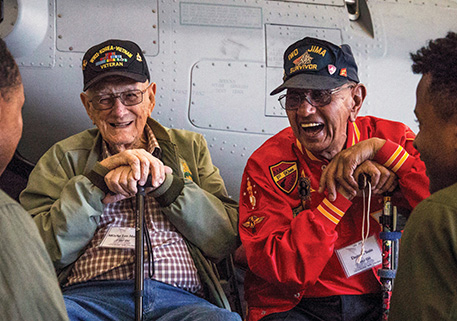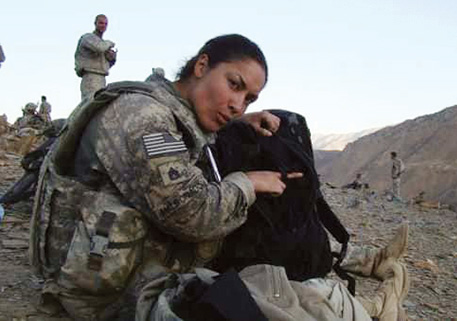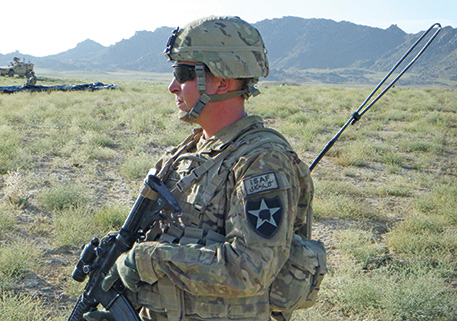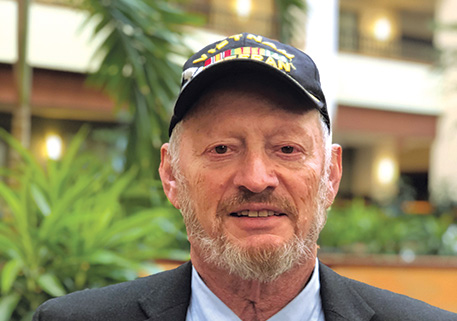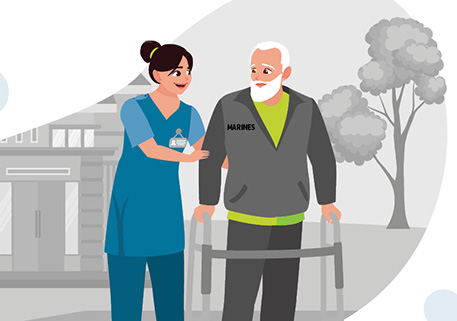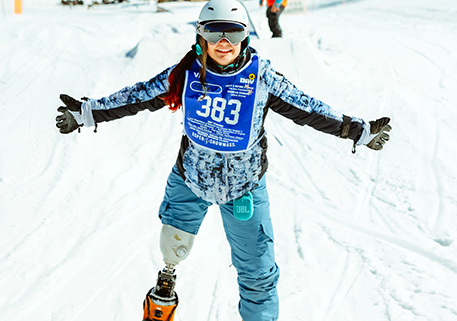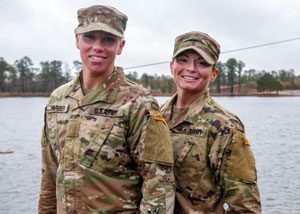
The first enlisted women National Guard soldiers prove they have what it takes to call themselves Army Rangers
Staff Sgt. Jessica Smiley joined the Army at a time when women were barred from holding combat jobs and participating in elite training, like Ranger School. But a lot has changed in the 13 years since she first enlisted, and this past December, Smiley became one of the first enlisted female National Guard soldiers to earn the coveted Ranger tab.
Smiley and fellow soldier Sgt. Danielle Farber join the ranks of dozens of women who now wear the signature black-and-gold Ranger tab after completing the grueling course designed to develop combat leaders and prepare them for special missions.
“I’ve always tried to push myself to not only meet the standard but to exceed it,” said Smiley, a military police officer in the South Carolina National Guard, “not just for myself, but to the benefit of the soldiers beneath and beside me.”
The path for the enlisted Guard duo was paved in 2015 by Army 1st Lt. Shaye Haver and Capt. Kristen Griest—the first of their gender to graduate the formidable 61-day course. The first female Army officer reported to the 75th Ranger Regiment two years later. Then, in 2018, the first enlisted female soldier, Staff Sgt. Amanda Kelley, received her tab.
To prepare for Ranger School, Smiley underwent an intense 18-month physical fitness regimen, incorporating ruck marches, running and weightlifting into her routine. And laying the groundwork paid off, as Smiley found herself shoulder to shoulder with the other graduating Rangers at a life-changing ceremony near Victory Pond at Fort Benning, Ga.
The monthslong course, however, took a toll. The allure of a good night’s sleep and hot meal was tempting, particularly so when scaling the arduous and unforgiving north Georgia mountains carrying a pack weighing anywhere from 65 to 90 pounds.
“There were several times I thought about quitting, but then I told myself I’d quit the next morning,” Smiley said. “It was a time where I could just quit, and I’d receive no repercussions, because I didn’t ‘need’ the school.”
But each time, when morning’s first light came, she returned to the task at hand, and the thought of quitting withered away.
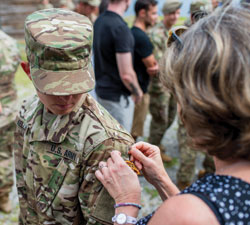

Division’s combat aviation brigade at Fort Bliss, Texas, gets
her Ranger tab pinned on by a family member during her
Ranger School graduation at Fort Benning, Ga., Aug. 31,
2018. Kelley was the first enlisted woman to earn the Ranger
tab. (Photo by Patrick A. Albright/Army)
Her spot alongside other Ranger candidates was made possible in 2015 when then-Defense Secretary Ashton Carter announced that all combat roles and specialized training would be open to women.
“There will be no exceptions,” Carter said at the time. “They’ll be allowed to drive tanks, fire mortars and lead infantry soldiers into combat. They’ll be able to serve as Army Rangers and Green Berets, Navy SEALs, Marine Corps infantry, Air Force parajumpers and everything else that was previously open only to men.”
The new policy meant changes, not just for the military, but also for the way the nation structures care and support for women veterans when they transition to civilian life.
Women are the fastest-growing demographic among all veterans in the United States today. About 9% of the roughly 9 million veterans treated by the VA are women, a percentage the Department of Veterans Affairs expects to double by 2040. To meet this demand, the House Veterans Affairs’ Committee announced the creation of the Women Veterans Task Force last year to identify and eliminate barriers women face when trying to access VA care—including reproductive health for women veterans, residential treatment programs and economic opportunity.
Specifically, the task force is focused on four areas: ensuring a welcoming and inclusive VA; providing equity and access to VA health care, including women-specific care such as gynecology and obstetrics; improving economic opportunities for women veterans and their families; and guaranteeing that women veterans have equal access to VA benefits, including education, disability and pension benefits.
“We have this growing population of women veterans who served during a time of war, and we know that they’re experiencing the same impact on their health as men,” said National Legislative Director Joy Ilem, who has been participating with the task force. “When they receive VA care, one apparent truth is a lot of these services and programs were designed for men; some of the nuances don’t shine through for women.
“It’s an exciting and important time to witness the evolution of gender roles in the military,” said Ilem. “Our charge now is to make sure we support that evolution by putting in place the appropriate measures to provide all veterans the care they need and deserve.”

